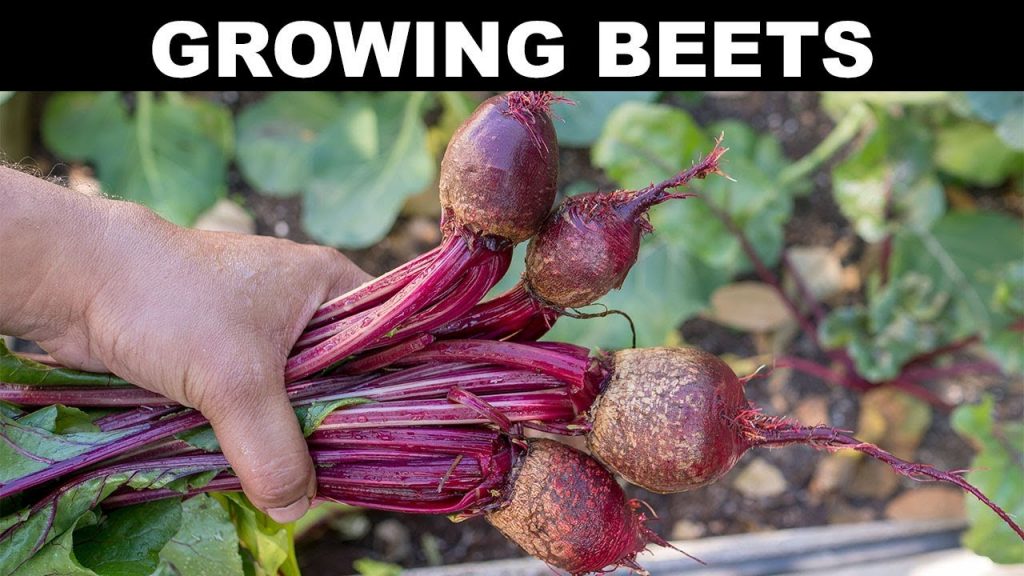Sugar Beet or beet, as it’s commonly called belongs to the family – Chenopodiaceae and it’s scientific name is Beta vulgaris.
Beet is an herbicious biennial plant but can be grown as an annual, which is common today or possibly as a perennial plant.
Sugar beet can not be grown everywhere, therefore, it’s not common and not easily grown by farmers.
Background
Beet is indigenous to southern Europe and Asia but the plant produce is fairly wildly distributed in the tropics.
The beet roots are rounded or tapering and enlarge with food reserves.
They are often red in color and rich in nutrients, and beet is used for both domestic and medicinal purposes.
Nature of Sugar Beet
The beet leaves form a rosette and are dark red or green, ovate or cordate in shape.
Beet requires seed bed preparation before you start planting the seed.
Germination of the seed takes about 2 weeks if all necessary conditions are met.
You need to make sure the plants are not overcrowded, therefore, set the seed planting 5 inches apart.
Beet prefer cool weather and it’s often planted between August and October,and harvested the next year.
A fall to winter harvest is often sought after when cultivating beet plants.
A high soil organic matter content is required for optimum growth and sandy loam soils are usually suitable.
High temperatures of over 25°C adversely affect growth and roots are likely to show distinct zonal markings as a result of high soil temperatures.
An elevation of more than 600m is normally required for successful root development.
Propagation is by seed, which is drilled 25-30cm apart at a depth of 1-2cm, seedlings being subsequently thinned to 10cm apart within the rows.
Irrigation is essential especially during the early stages of establishment and during dry periods.
Harvesting
After 3 months, you can expect your beet to have grown to maturity, and will continue to grow.
The inflorescence is formed in the second year of growth if environmental conditions are favorable and comprise 3-4 flowers arranged on a spike, each subtended by a small narrow leaf.
The fruits are mostly formed by the cohesion of two or more fruits held together by swollen perianth bases.
The seeds are small and kidney-shaped.
Plants produce roots ready for harvest 2.5-3 months after planting and yields of 15-24 t/ha can be obtained.
The seed is not formed at low altitudes since a period of low temperature is required for the initiation of the flowers.
Uses
The sweet tender roots are consumed as a salad. Boiled roots and leaves are also eaten as cooked vegetables.
They are also pickled, canned, or frozen. Beetroot wine is a popular homemade wine.
Beet leaves and roots are rich in macro and micro elements.
Sugar beet is rich in doetary fiber which is good for everyone, protein, iron, sodium, potassium, magnesium, and vitamins, most importantly, Vit. C, B and D.
Medicinal Uses
Beet can be processed into juice and other forms and it can benefits both men and women.
Since beet can help to open up the blood vessels and improve blood circulation, it can help with erectile dysfuntion.
Beet also increase nitric oxide, help testosterone pumping, and help to get or maintain erection.
For women, it can help to strengthen the hair follicles, and darken the hair color.
Sugar beet can also reduce water retention, and induce memses in women.
For both men and women, beet can help with bloating, improve blood circulation and make the skin to glow.
When you eat beetroot every day, the consequence is weight loss, and it’s a form of side effect if you don;t intend to shed some pounds.
There are also testimonies of the benefits of beet on liver cirrhosis and kidney.








